Osman Adiguzel, Firat University, Turkey
Some materials take place in class of smart materials with adaptive properties and stimulus response to the external changes. Shape memory alloys take place in this group, by exhibiting shape reversibility and capacity of responding to changes in the environment. Thes [....] » Read More

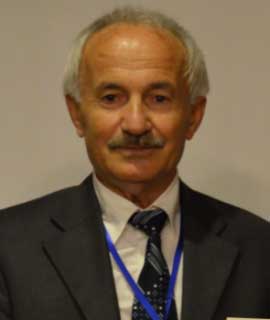

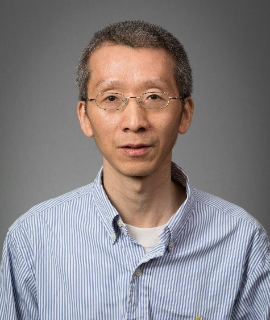
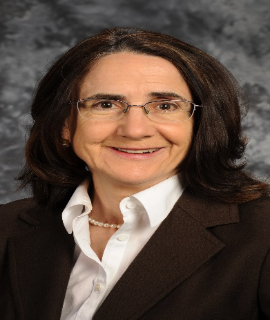






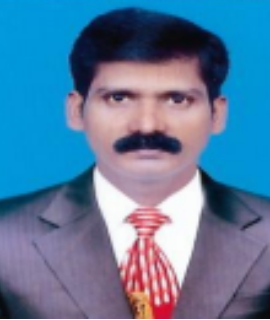





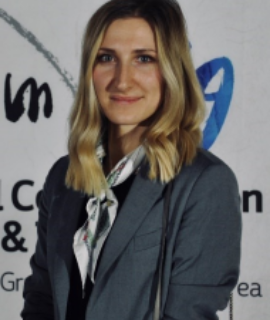



Title : Application of metal single-site zeolite catalysts in heterogeneous catalysis
Stanislaw Dzwigaj, Sorbonne University, France
The metal ions well dispersed at zeolite framework are considered to be active sites of catalytic processes. Therefore, the incorporation of these metals into zeolites as isolated tetrahedral sites appears to be the important task. We have earlier shown that the incorporation of [....] » Read More
Title : Bioelectrocatalytic materials based on buckypapers and biosourced glyconanoparticles
Serge Cosnier, Universie Grenoble Alpes, France
For four decades, the functionalization of electrodes by biomaterials based on electrogenerated polymers, carbon nanotubes and / or nano-objects, was widely used in the field of analytical chemistry and energy conversion for the design of biosensors and biofuel cells. Some new ap [....] » Read More
Title : Solution of the millennium problem concerning the Navier-Stokes equations
Alexander G Ramm, Kansas State University, United States
It is proved that the Navier-Stokes equations are physically and mathematically contradictive and there is no solution to the Navier-Stokes problem on the whole semi-axis of time in the whole three-dimensional space without boundaries. The aim of this talk is to analyse t [....] » Read More
Title : Role of supplemented nutrients and intermediate temperature on bio-methane generation from anaerobic digestion of agricultural waste: Feasibility & Fertilizer recovery
Md Nurul Islam Siddique, University Malaysia Terengganu, Malaysia
The rise in demand for organisms pulled in by anaerobic digestion could be due to the simultaneous digestion of many substrates. The impact of supplements on the co-digestion of growth substrates was investigated in this study. In three phases, 37 °C, 40 °C, and 50 °C [....] » Read More
Title : Highly rotationally excited N2 of N2O dissociation on Pd(110) surface
Zibo Zhao, Max Planck Institute for Multidisciplinary Sciences, China
To understand the energy transfer processes associated with chemical bond breaking and successive bond formation is essential to study the dynamics of surface reactions. Although the internal states measurements of desorption products deliver much dynamical information& [....] » Read More
Title : Preparation of catalyst with defective cerium-based structures and its application in VOCs degradation
Huiqin Li, Inner Mongolia University, China
The effectively decontamination for atmosphere VOCs is getting more important whereas it is general facing the issues such as technical difficulties and high energy consumption. In this work, a Z-scheme Ag/Ag3PO4/CeO2 heterojunction was prepared with a precipitation method and wa [....] » Read More
Title : Tungsten trioxide cathode films for electrochromic devices
Chi Ping Li Bing Ze Li, National United University, Taiwan
Template-assisted sol gel chemistry provides a versatile approach to introduce order and porosity into nanostructured materials. However conventional evaporation induced self-assembly techniques are not easily scaled to produce films with sufficient thickness over large areas at [....] » Read More
Title : E-commerce adoption in B2B specialty chemical industry
Vinod Agnihotri, SP Jain School of Global Management, Singapore
E-commerce as a pathbreaking disruptive innovation of recent times, offers general businesses, a high level of customer satisfaction delivering noticeable cost benefits. Since the inception of E-commerce concept, we have been experiencing its exponential momentum in every corner [....] » Read More
Title : Thermolysis of petroleum oil and solubility of deposits
N Mamulaishvili, Rustaveli State University, Georgia
The article discusses the process of formation of deposits in the pipelines of the engine oil system and the factors affecting the conditions for their formation. The technological process of oxidation and the criteria for indicator parameters characterizing the thermolysis of us [....] » Read More
Title : Development and research of an innovative magnetron ion-plasma electrodispersion reactor for the fields of catalysis, chemical engineering and technology
Marina Kipiani, LEPL Institute “Optica", Georgia
The work is dedicated to the development of an innovative construction of a magnetron ion-plasma electrodispersion reactor based on a planar-rotational magnetron sputtering device with improved capabilities in the direction of synthesizing catalysts, as well as general chemical e [....] » Read More
Title : Role of Ni, La impregnation and substitution in Co3O4-ZrO2 catalysts for catalytic hydrogen combustion
Yaddanapudi Varun, Birla Institute of Technology and Science (BITS) Pilani, India
Ni and La were substituted and impregnated on Co3O4-ZrO2 (CZ) nanocomposites by solution combustion and wetness impregnation methods for catalytic hydrogen combustion. In this study, our focus is to understand the role of active metals and their interactions with the support CZ i [....] » Read More
Title : One pot synthesis of ultrasmall NiMo catalysts supported on amorphous alumina with enhanced type 2 sites for hydrodesulfurization reaction: A combined experimental and theoretical study
Shalini Arora, IIT Kanpur, India
The deep removal of high molecular weight sulphur compounds (e.g., 4,6, dimethyl dibenzothiophene) is challenging due to their steric hindrance. Hydrogenation desulfurization (HYD) pathway is the main pathway to remove these sulfur compounds and it is mainly governed by the [....] » Read More
Title : Experimental studies on control of a two tank non-interacting liquid level System using internal model based pid controller
Noorin Fatima, Osmania University, India
The flow and level control system play very important role in a Chemical Industry to achieve important objectives. The higher order processes tend to show unstable behavior and an advanced control system is required for such processes to meet set point tracking and dist [....] » Read More
Title : Roll of catalyst in space propulsion system
P K Dash, NMIT, India
The space propulsion becomes more challengeable in current era of 21st Century. Lot of developments are happening to overcome the required speed and stability in this domain. But it is still going research for achieving the goal. In 20th Century, the scientific community and engi [....] » Read More
Title : Synthesis of ZnO via solution combustion method; study the effect of ignition temperature and fuel quantity
Suman Dutta, Indian Institute of Technology (ISM) Dhanbad, India
Zinc oxide (ZnO) nanoparticle photocatalyst has been synthesized by solution combustion method using zinc nitrate as the oxidizer and urea as the fuel. The effect of fuel-to-oxidizer ratio and ignition temperature on the properties of synthesized catalysts have been studied. The [....] » Read More
Title : Imaging of chemical kinetics at the water–water interface in a free-flowing liquid flat-jet
Hanns Christian Schewe, Czech Academy of Sciences, Czech Republic
Two cylindrical liquid microjets are set up in a colliding geometry to generate a planar leaf-shaped flowing sheet. Using jets with two different aqueous solutions, each containing a reactant for a fast chemiluminescence reaction, we image the emitted photons to spatially vi [....] » Read More
Title : Snail shells as a heterogeneous catalyst for biodiesel synthesis
Ieva Gaide, Vytautas Magnus University Agriculture Academy, Lithuania
The world is going through an energy crisis related to the transition to a wider use of renewable energy resources. Due to climate changes, greenhouse gas emissions and fossil fuel depletion, the energy situation is not stable. There are also problems with obtaining oil due to th [....] » Read More
Title : An investigation on adsorption of heavy metal with hydrochar developed from industrial waste: Kinetics, mechanisms, and desorption
Hasan Saygili, Batman University, Turkey
As a result of the rapid development of the industry, heavy metal pollution of water environments is a very serious problem. Removal of heavy metal ions and derivatives from the environment has become a priority in order to preserve the quality of the ecosystem. Adsorption is an [....] » Read More
Title : Antecedents of the adoption of big data by the global chemical industry
Ashiff Khan, Saudi Aramco, Saudi Arabia
SP Jain School of Global Management, Australia
The new era of big data is influencing the chemical industry tremendously, providing several opportunities to reshape its operations. However, given the development of big data, the availability of free software, and the large amount of real- time data generated and stored, the c [....] » Read More
Title : Removal of phenol from wastewater using biological and industrial wastes as adsorbents
Ashanendu Mandal, University of Calcutta, India
This research aims for adsorptive removal of phenol from wastewater by solid materials generated from biological wastes viz. guava tree bark, rice husk, neem leaves, activated carbon from coconut coir and industrial wastes viz. rice husk ash, red mud, clarified sludge from basic [....] » Read More
Title : Effect of catalyst acidity and reduction step on carbon dioxide valorization
George Karagiannakis, Chemical Process & Energy Resources Institute, CERTH, Greece
Over the last decades, carbon dioxide (CO2) is incessantly accumulated in the atmosphere due to human activities, especially in countries with developed economies. CO2 constitutes one of the main greenhouse gases and CO2 emissions are linked with global warming and several enviro [....] » Read More
Title : Quantitative analysis on collective interlaboratory adsorption data on ZIF-8
Minjae Baek, Korea International School Jeju, Korea, Republic of
Gas adsorption, a surface phenomenon leading to densification of gas molecules on a solid surface, is important in many energy and environmental applications, such as efficient separation processes, carbon capture, and geological carbon storage. Experimental measurements of adsor [....] » Read More
Title : Mathematical model of a solar irradiated monolithic reactor
George Karagiannakis, Chemical Process & Energy Resources Institute, CERTH, Greece
Solar-aided hydrogen production seems an interesting solution in the transition towards a carbon-free energy future. In this context, redox materials are employed to directly dissociate water in extremely high temperature processes (T>1000oC), where the required energy is prov [....] » Read More
Title : Thermodynamic properties of aqueous L-threonine-[BMIm][Cl] solutions
Tarnveer Kaur, Punjabi University, India
Amino acids as fundamental structural units of peptides and proteins have an important role in biological systems by affecting solubility, denaturation and activity of biomolecules [1-3]. Study of these effects on thermophysical properties of model compounds in the presence of el [....] » Read More